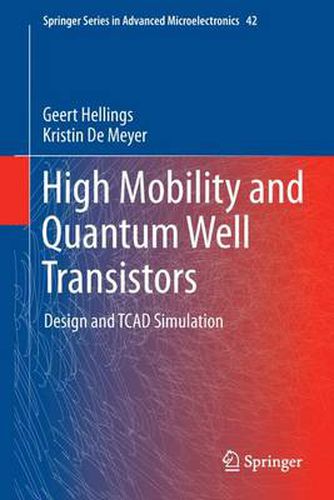Readings Newsletter
Become a Readings Member to make your shopping experience even easier.
Sign in or sign up for free!
You’re not far away from qualifying for FREE standard shipping within Australia
You’ve qualified for FREE standard shipping within Australia
The cart is loading…






This title is printed to order. This book may have been self-published. If so, we cannot guarantee the quality of the content. In the main most books will have gone through the editing process however some may not. We therefore suggest that you be aware of this before ordering this book. If in doubt check either the author or publisher’s details as we are unable to accept any returns unless they are faulty. Please contact us if you have any questions.
For many decades, the semiconductor industry has miniaturized transistors, delivering increased computing power to consumers at decreased cost. However, mere transistor downsizing does no longer provide the same improvements. One interesting option to further improve transistor characteristics is to use high mobility materials such as germanium and III-V materials. However, transistors have to be redesigned in order to fully benefit from these alternative materials.
High Mobility and Quantum Well Transistors: Design and TCAD Simulation investigates planar bulk Germanium pFET technology in chapters 2-4, focusing on both the fabrication of such a technology and on the process and electrical TCAD simulation. Furthermore, this book shows that Quantum Well based transistors can leverage the benefits of these alternative materials, since they confine the charge carriers to the high-mobility material using a heterostructure. The design and fabrication of one particular transistor structure - the SiGe Implant-Free Quantum Well pFET - is discussed. Electrical testing shows remarkable short-channel performance and prototypes are found to be competitive with a state-of-the-art planar strained-silicon technology. High mobility channels, providing high drive current, and heterostructure confinement, providing good short-channel control, make a promising combination for future technology nodes.
$9.00 standard shipping within Australia
FREE standard shipping within Australia for orders over $100.00
Express & International shipping calculated at checkout
This title is printed to order. This book may have been self-published. If so, we cannot guarantee the quality of the content. In the main most books will have gone through the editing process however some may not. We therefore suggest that you be aware of this before ordering this book. If in doubt check either the author or publisher’s details as we are unable to accept any returns unless they are faulty. Please contact us if you have any questions.
For many decades, the semiconductor industry has miniaturized transistors, delivering increased computing power to consumers at decreased cost. However, mere transistor downsizing does no longer provide the same improvements. One interesting option to further improve transistor characteristics is to use high mobility materials such as germanium and III-V materials. However, transistors have to be redesigned in order to fully benefit from these alternative materials.
High Mobility and Quantum Well Transistors: Design and TCAD Simulation investigates planar bulk Germanium pFET technology in chapters 2-4, focusing on both the fabrication of such a technology and on the process and electrical TCAD simulation. Furthermore, this book shows that Quantum Well based transistors can leverage the benefits of these alternative materials, since they confine the charge carriers to the high-mobility material using a heterostructure. The design and fabrication of one particular transistor structure - the SiGe Implant-Free Quantum Well pFET - is discussed. Electrical testing shows remarkable short-channel performance and prototypes are found to be competitive with a state-of-the-art planar strained-silicon technology. High mobility channels, providing high drive current, and heterostructure confinement, providing good short-channel control, make a promising combination for future technology nodes.